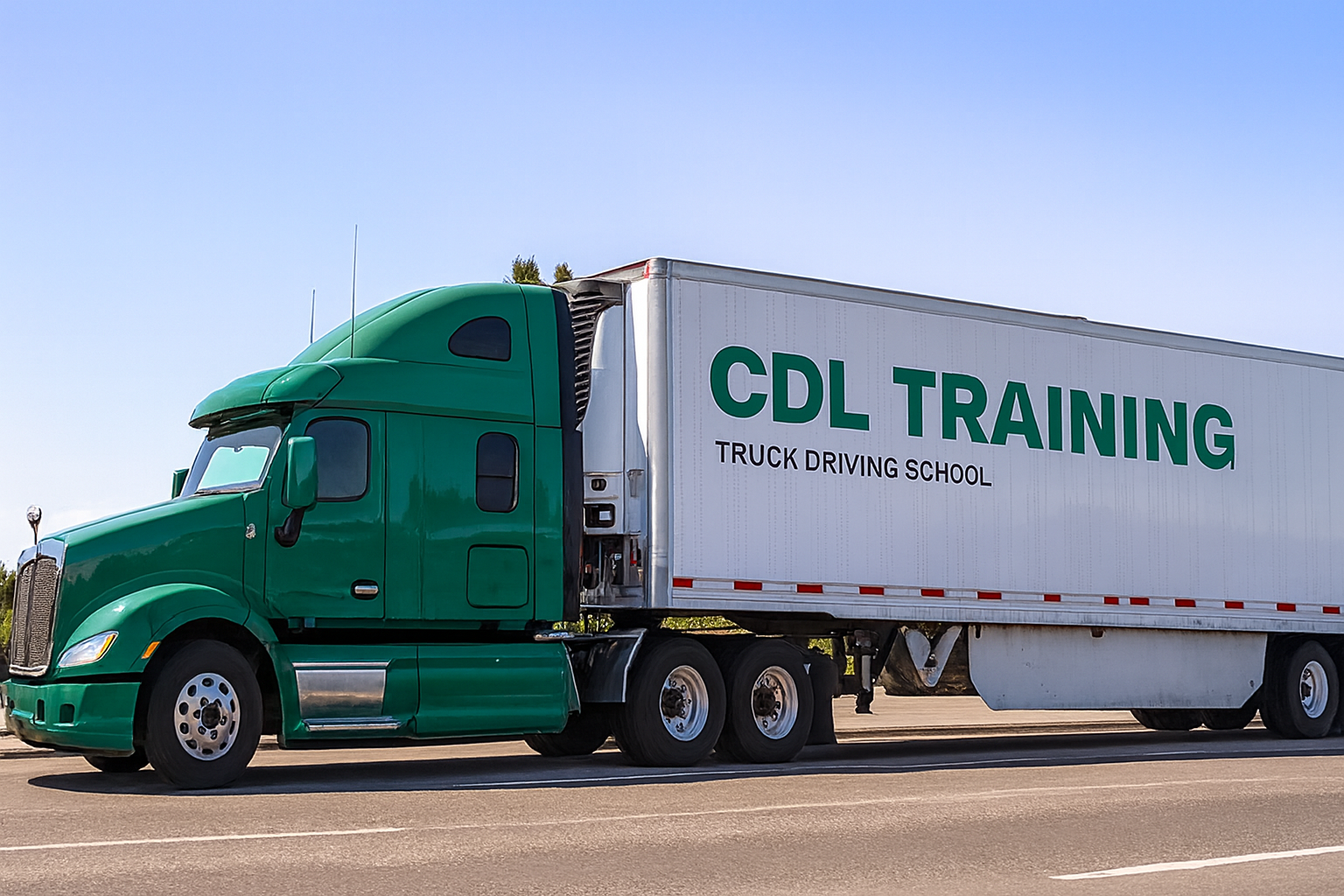Earn While You Train: Paid CDL Truck Driver Apprenticeships in the U.S.
Transitioning to a career as a truck driver is both fast and financially accessible. Through the PaidCDL (Commercial Driver License) apprenticeship program, trainees can start earning income while learning on the job. The program blends hands-on driving instruction with essential classroom lessons, offering a direct and efficient route to a stable, in-demand career in transportation. No prior experience is needed—just motivation and a willingness to learn a trade that keeps America moving.

Industry Demand: A Driver Shortage Crisis
- Current gap of ~60,000 drivers, per the American Trucking Associations (ATA); projections indicate this could swell to 82,000 by year’s end
- Longer‑term forecasts warn the shortage may hit 160,000 by 2030, reflecting retirements and insufficient new entrants
- Annual hiring needs exceed 89,000 drivers over the next decade just to replace retirees, on top of demand growth
- Turnover rates in long‑haul trucking surpass 90% at many carriers, further exacerbating staffing challenges
This shortage fuels competition among carriers to recruit and retain qualified drivers, making paid apprenticeship pathways especially attractive.
Why CDL Apprenticeships Are in High Demand
- Immediate Income : Apprentices earn $18–22/hr during training, compared to the national median for heavy and tractor‑trailer truck drivers of $23.23/hr (≈$48,310/yr) .
- Rapid Certification Path : Most programs combine 4–8 weeks of classroom and range‑based instruction with paid behind‑the‑wheel mentoring.
- Real‑World Experience : Structured on‑road training under veteran drivers builds core skills: vehicle control, hours‑of‑service compliance, and safety procedures.
- Retention Incentives : Sponsorship agreements often include commitment bonuses or tuition reimbursement clauses to ensure program completion.
Featured CDL Apprenticeship Programs (2025)
Prime Inc. offers one of the most accessible paths into trucking through its Paid CDL Training Program. Trainees earn $20 per hour during the five-week school period, followed by two weeks of supervised driving. This combination of classroom instruction and real-world experience helps students quickly build confidence behind the wheel. Upon completion, most drivers transition into full-time positions with annual earnings of around $60,000, making it an appealing choice for those seeking steady income and reliable employment.
The Schneider National CDL Apprenticeship program provides a structured learning path across multiple training hubs nationwide. Participants receive $19 per hour for four weeks of classroom and range instruction, then continue with a one-year mentorship to gain professional experience. After certification, drivers can expect to earn between $65,000 and $80,000 per year, reflecting Schneider’s focus on career growth and long-term driver success.
At Swift Transportation, the DRIVE Apprenticeship program focuses on hands-on skill development through regional training centers. Trainees are paid $18 per hour during six weeks of combined training and shadow driving. Graduates typically move into full-time roles earning an average of $70,000 annually after their first year. Swift’s program is ideal for individuals seeking a fast entry into the trucking profession with stable pay progression.
Roehl Transport provides one of the industry’s most competitive apprenticeship opportunities. Trainees earn $21 per hour over a five-week training period, which includes extensive range practice and supervised driving routes. After completing the program, most drivers report annual salaries ranging from $75,000 to $85,000, reflecting Roehl’s commitment to quality instruction and driver advancement through real-world learning.
- CR England Academy
The CR England Academy offers nationwide training locations designed for students who want immediate, paid entry into the trucking industry. Participants earn $20 per hour while attending paid school sessions and completing 240 hours of road training. Graduates often transition into high-earning positions, with the top 20% of drivers making $90,000 or more per year. This program stands out for combining national reach, consistent pay, and strong post-training career outcomes.
Salary Progression & Job Outlook
- Median Wage: Heavy and tractor‑trailer drivers earn $23.23/hr (~$48,310/yr) .
- Entry‑Level: New CDL holders start near $50,000–$60,000/yr, with safety and performance bonuses pushing many into the $80,000–$90,000/yr range .
- Growth: BLS projects a 2% increase in driver jobs from 2022–2032 (~17,000 openings/yr) .
Daily Duties & Training Components
On‑The‑Job:
- Operate Class A trucks on regional/long‑haul routes
- Conduct pre‑ and post‑trip inspections, load securement, logbook entries
- Coordinate with dispatch, manage delivery paperwork
Classroom & Range:
- Vehicle control exercises (backing, maneuvering)
- Federal/state regulations, hours‑of‑service, safety protocols
- Load handling, basic maintenance, defensive driving
Apprentices split time between intensive classroom blocks and escalating behind‑the‑wheel mentoring.
How to Launch Your CDL Apprenticeship
- Select a Program
Research carrier‑backed apprenticeships with paid training and job placement.
- Meet Requirements
Typically: age 21+, valid driver’s license, clean driving record, DOT physical.
- Apply & Interview
Complete the carrier’s online application and skills interview.
- Begin Paid Training
Attend classroom and range sessions (4–8 weeks), then start paid on‑road mentorship.
- Obtain CDL & Transition
Pass knowledge and road tests; finish apprenticeship to unlock full driver pay and benefits.
Typical Duration of CDL Paid Training Programs
Most paid CDL apprenticeship programs last between 4 and 8 weeks, combining classroom education, simulator practice, and behind-the-wheel instruction. Carriers such as Schneider and Roehl Transport typically complete their initial CDL training in about five to seven weeks, while programs at Prime Inc. and C.R. England may extend to 10–12 weeks when mentorship and team-driving phases are included. This gradual structure allows new drivers to master essential skills—vehicle handling, safety compliance, and route management—before transitioning to solo assignments. The overall goal is to ensure every trainee enters the workforce with both certification and practical, real-world confidence.